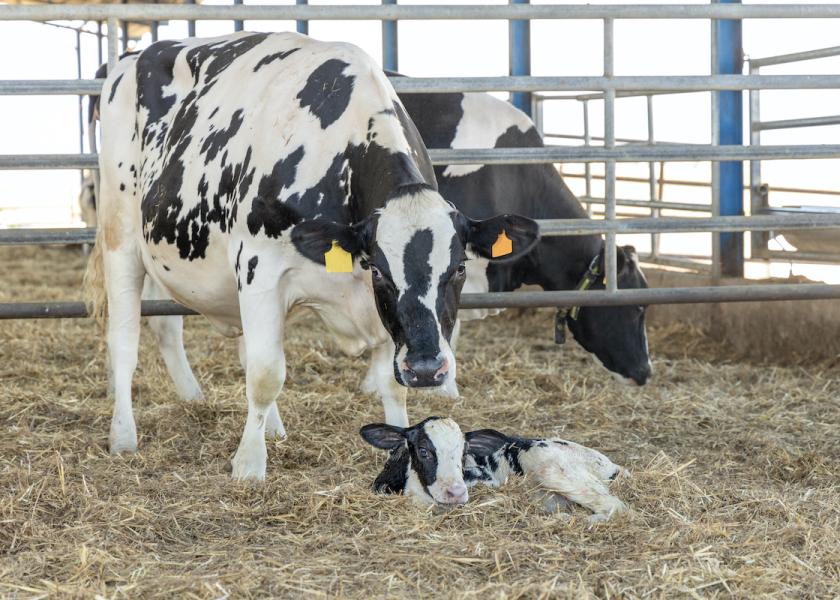The Evolution of Milk Fever Mitigation

When Rod Martin was a budding dairy nutritionist in the 1980s, milk fever (hypocalcemia) was high on the list of concerns of dairy producers. In those days, the fresh-cow disorder widely occurred in acute fashion, with down cows and frequent deaths.
Martin – now a dairy nutritionist with Protekta and based in Madison, Wis. – appeared on two recent episodes of The Dairy Nutrition Blackbelt podcast. There he shared the sequential landmarks on the road to controlling hypocalcemia, which he has witnessed in real time.
“When we went to school in the 80s, we were taught to watch dietary calcium levels,” Martin recalled. “There was research from the 70s and 80s that showed if you could limit dietary calcium, you would help jump-start that PTH mechanism that pulls calcium out of the bone to meet the demands for that fresh cow.”
The challenge, said Martin, was that the research suggested limiting calcium to 20 grams per head per day or less. But in the field, it was only practical to dial calcium down to about 60-70 grams per head per day.
Still, nutritionists soldiered on in their quest to keep calcium levels low in pre-fresh rations. One of the first moves, said Martin, was removing alfalfa hay and haylage, and replacing it with grass hay and corn silage.
That worked pretty well, until other, equally low-calcium forages were brought into the fold. Suddenly, there was a new rash of acute milk fevers when small-grain silages like rye and milo were incorporated. The culprit: potassium.
“We’d been so focused on calcium that we didn’t realize other nutrients played a role, too,” said Martin. “It turns out that some of those feedstuffs had more than 4% potassium, which resulted in very high milk fever rates.”
So, through the 90s, nutritionists started focusing on low potassium rates as well. Martin noted that potassium also plays a key role in magnesium absorption.
In the 2000s, negative dietary cation-anion difference (DCAD) diets evolved. Manipulating sodium, potassium, chlorine, and sulfur to reduce metabolic alkalosis in pre-fresh rations had a significant, positive impact on reducing clinical milk fevers.
Monitoring urine pH of fresh cows became a common duality with feeding negative DCAD diets. Martin said focus in the 2010s shifted to debate on the ideal range of those urine pH readings. Initially, about 5.8-6.4 was recommended, though many nutritionists argue levels should be lower than that.
Finally, in the 2020s, phosphorus has entered the hypocalcemia management spotlight. “For decades, phosphorus has been regarded as a macromineral that didn’t play much of a role in hypocalcemia,” explained Martin. “We’ve learned more recently that phosphorus has been overlooked.”
A significant body of research now indicates that keeping phosphorus low in the pre-fresh ration has a positive effect on blood calcium levels. Martin said the challenge in minimizing phosphorus lies in the fact that most large dairies feed a lot of co-products -- which tend to be high in phosphorus -- with dry-cow diets often containing phosphorus levels as high as .4-.5%.
He advised a level of no more than .3% phosphorus is best, which can be accomplished in part by managing feedstuff inclusion. “Distiller’s grains, canola meal, and corn gluten all have to be used carefully and at reasonable levels,” he advised.
Other strategies include continuing to feed a negative DCAD diet in the dry period; employing a “one-group” dry-cow feeding strategy; and/or using a binding product to tie up excess phosphorus.
Fortunately, all of this progress has added up to an extremely low incidence of clinical milk fevers today. But Martin said the incidence of subclinical hypocalcemia is still unacceptably high, with excess phosphorus needing more attention.
“Don’t overlook phosphorus,” he advised. “Lower is better; try to find feedstuffs to meet those needs.







